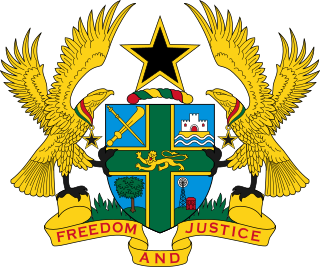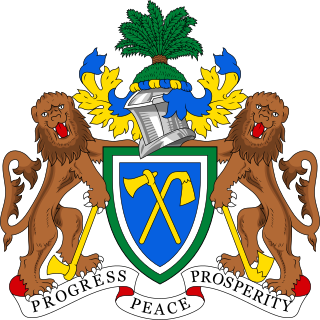
The House of Windsor is the reigning royal house of the United Kingdom and the other Commonwealth realms. In 1901, a line of the House of Saxe-Coburg and Gotha succeeded the House of Hanover to the British monarchy with the accession of King Edward VII, son of Queen Victoria and Prince Albert of Saxe-Coburg and Gotha. In 1917, the name of the British royal house was changed from the German Saxe-Coburg and Gotha to the English Windsor because of anti-German sentiment in the United Kingdom during the First World War. There have been five British monarchs of the House of Windsor since then: George V, Edward VIII, George VI, Elizabeth II, and Charles III. The children and male-line descendants of Queen Elizabeth II and Prince Philip also genealogically belong to the House of Oldenburg since Philip belonged to the Glücksburg branch of that house.
The style and title of the Canadian sovereign is the formal mode of address of the monarch of Canada. The form is based on those that were inherited from the United Kingdom and France, used in the colonies to refer to the reigning monarch in Europe. As various Canadian territories changed ownership and then the country gradually gained independence, the style and title of the monarchs changed almost as often as the kings and queens themselves. The mode of address currently employed is a combination of a style that originates in the early 17th century and a title established by Canadian law in 1953.
In the Commonwealth realms, a Royal Style and Titles Act or a Royal Titles Act is an act of parliament passed in the relevant jurisdiction that defines the sovereign's formal title in that jurisdiction. The most significant of these acts is the United Kingdom's Royal and Parliamentary Titles Act 1927, which recognised the creation of the Irish Free State, a development that necessitated a change in King George V's title.

The monarchy of New Zealand is the constitutional system of government in which a hereditary monarch is the sovereign and head of state of New Zealand. The current monarch, King Charles III, acceded to the throne following the death of his mother, Queen Elizabeth II, on 8 September 2022 in the United Kingdom. The King's elder son, William, Prince of Wales, is the heir apparent.
The precise style of British sovereigns has varied over the years. The present style is officially proclaimed in two languages:

Counsellors of State are senior members of the British royal family to whom the monarch can delegate and revoke royal functions through letters patent under the Great Seal, to prevent delay or difficulty in the dispatch of public business in the case of their illness or of their intended or actual absence from the United Kingdom.

Elizabeth II was Queen of Malta as head of state of Malta from 1964 to 1974. Malta was an independent sovereign state and a constitutional monarchy, sharing a monarch with other Commonwealth realms, including the United Kingdom. Elizabeth's constitutional roles in Malta were mostly delegated to a governor-general.

The monarchy of Australia is Australia's form of government embodied by the Australian sovereign and head of state. The Australian monarchy is a constitutional monarchy, modelled on the Westminster system of parliamentary government, while incorporating features unique to the Constitution of Australia.

The Pillar Box War refers to a number of politically motivated acts of vandalism against post boxes in Scotland during the early 1950s in a dispute over the correct title of the new British monarch, Elizabeth II or Elizabeth I.

Elizabeth II was Queen of Ghana from 1957 to 1960, when Ghana was an independent sovereign state and a constitutional monarchy. She was also queen of the United Kingdom and other sovereign states. Her constitutional roles in Ghana were delegated to the governor-general of Ghana.

Elizabeth II was Queen of the Gambia from 1965 to 1970, when the Gambia was an independent sovereign state and a constitutional monarchy within the Commonwealth of Nations. She was also the monarch of the other Commonwealth realms, including the United Kingdom. Her constitutional roles in the Gambia were delegated to the governor-general.

Elizabeth II was Queen of Guyana from 1966 to 1970, when Guyana was independent sovereign state with a constitutional monarchy. She was also the sovereign of the other Commonwealth realms, including the United Kingdom. Her constitutional roles were delegated to the governor-general of Guyana.

Elizabeth II was Queen of Kenya from 1963 to 1964, when Kenya was an independent sovereign state with a constitutional monarchy. She was also the sovereign of the other Commonwealth realms, including the United Kingdom. Her roles as the Kenyan head of state were delegated to the governor-general of Kenya.

Elizabeth II was Queen of Malawi from 1964 to 1966, when Malawi was an independent sovereign state and a constitutional monarchy within the Commonwealth of Nations. She was also the sovereign of the other Commonwealth realms, including the United Kingdom. The 1964 Constitution of Malawi vested executive power in the monarch as head of state, though her constitutional roles were delegated to her representative, the governor-general, Sir Glyn Smallwood Jones.

Elizabeth II was Queen of Mauritius as well as its head of state from 1968 to 1992 when Mauritius was an independent sovereign state and a constitutional monarchy within the Commonwealth of Nations. She was also the monarch of other Commonwealth realms, including the United Kingdom. Her constitutional roles in Mauritius were delegated to a governor-general. Mauritius became a republic in 1992.

Elizabeth II was Queen of Uganda as well as the head of state of Uganda from 1962 to 1963, when the country was an independent constitutional monarchy. She was also the sovereign of other countries in the Commonwealth of Nations, including the United Kingdom.

The Royal Titles Act 1953 was an act of the Parliament of Ceylon which altered the monarch's title in Ceylon.














